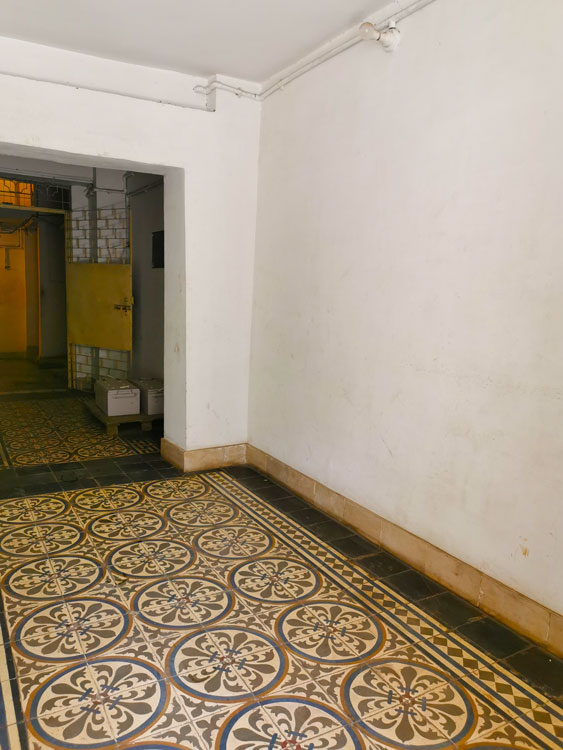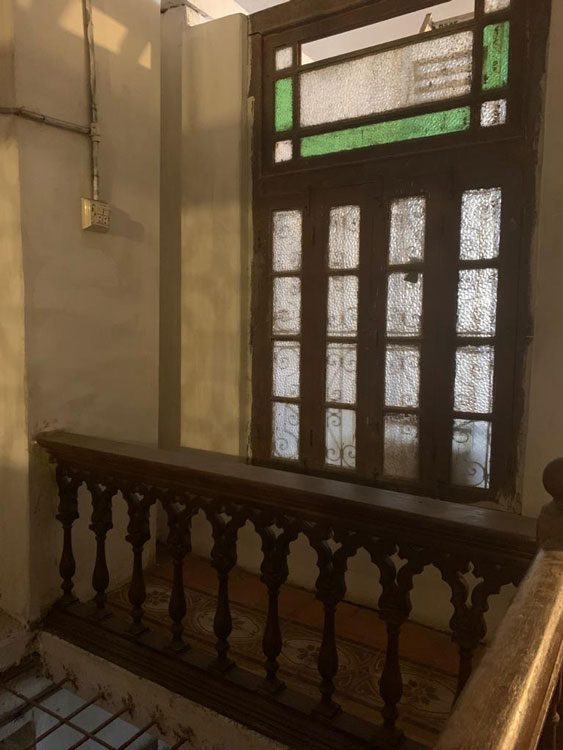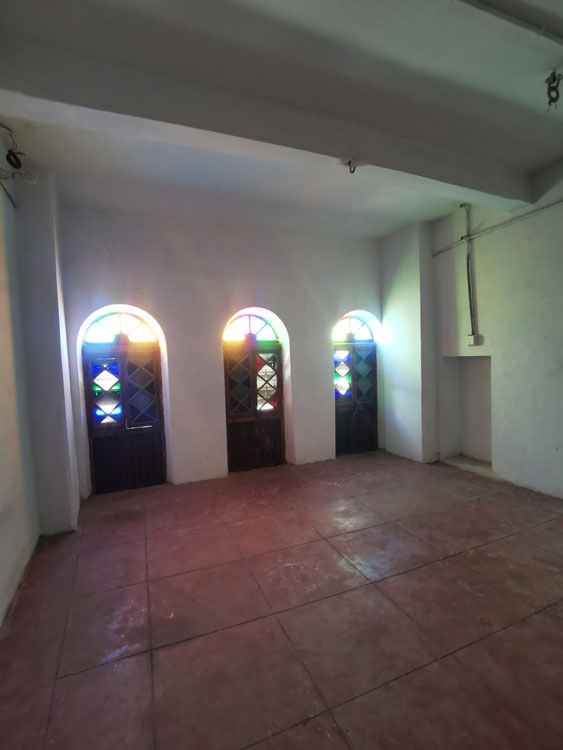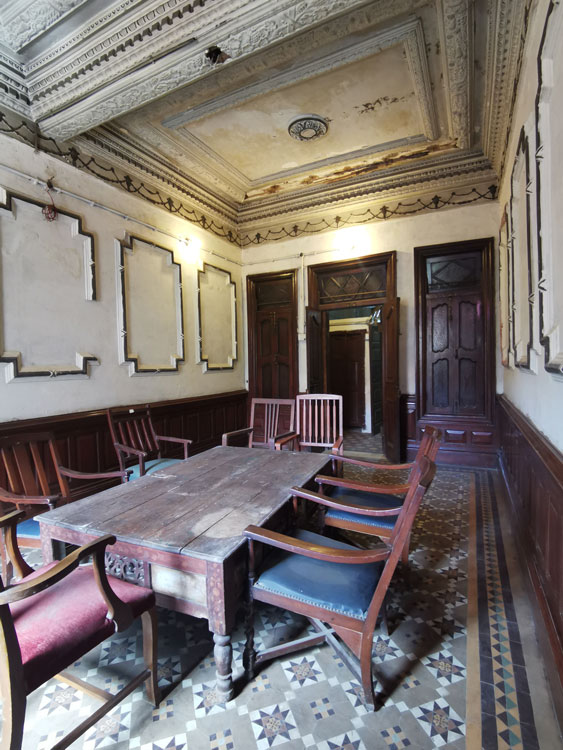It is still relatively early on a warm summer afternoon when we navigate the smog, noise and unruly traffic that is the quintessence of Karachi’s MA Jinnah Road. Amidst the chaos, it’s easy to miss a narrow, graceful building. A small ornamental balcony juts out incongruously over the random jumble of shops and stalls on the street below. This is Hamid Market, silent witness to the changing times and the degradation of the street on which it stands.


In fact, this once broad and stately road was lined with beautifully embellished buildings constructed mostly in the Neo-Gothic or the Anglo-Imperial Vernacular style. The choice of material was the ubiquitous yellow Gizri stone which lends Karachi’s colonial architecture a distinctive touch.Today a few of these edifices still remain standing, exuding a shabby grandeur and mysterious sense of untold stories and histories.


Hamid Market came to our attention during the last Karachi Biennale in which the building featured as one of the venues for the Biennale. Fascinated by old buildings as we always are, we wanted to learn more. Fortunately, Feroze Aftab, whose family owns the building, was gracious enough to invite us over for a visit and tell us something about its history.


Hailing from a Katchi Memon family, Ms Aftab’s grandfather moved his family to Karachi in the latter 1800s, setting up businesses and building places for them to live and work.
So your grandfather built Hamid Market?


Yes. There were 35 buildings in all. The ones on this street, including Hamid Market, were all office buildings. The family lived in homes in the nearby Garhi Khata area. My father and his siblings were all born in the early 1900s in Lady Dufferin hospital.
Are any of the residential buildings still standing?


They are but we have given them over to become a community jamaat khana, another is now a library. There is also a masjid in the area, also built by my grandfather, which is still in use.

So your’s is a very old Karachi family?
Yes it is. But my grandfather thought Karachi was too hot in the summers and bought a home in Quetta where the family would move for the summers. He set up businesses there as well and in Karachi we became known as the Quettawallas, since, business families are given names depending on their professional association.


In those days everything was imported and we had a shop selling all kinds of imported goods, ranging from silk scarves and stockings to household dishes. In Quetta the shop was located on Bruce street, which is now called MA Jinnah Road there as well. There was a building with a few floors for the shop and the family lived on the top floor. Our main business, however, was that of ammunition used mainly for hunting.
Who is this building named after?

Hamid was the name of my great-grandfather. These were all office buildings; in the 1930s ammunition was stored here. Everyone lived and worked together.
In between the two World Wars there was a recession and things were rationed. And my grandfather had a very large family and extended family. But the people were very large-hearted and helped each other.


Hamid Market is divided into several units and they were all given on rent. The building has a ground level plus four floors with an open space in the centre. But I had to have the open area covered because of the grime and dust.

So Hamid Market remained in use even after your grandfather passed?
Later, even after the munitions business was sold in my fathers time, and the family went into the hosiery business, this building was still maintained as the family offices, although the factories were obviously elsewhere.


The other units were rented out to several law firms. The buildings were in use till 1989 when my father passed away, we had many tenants.

In the 2009 bomb blast on Ashura, this building was also set on fire which raged for hours before it could be put out. Fortunately no one was in the building and amazingly enough, the fire did little damage. The walls and doors and windows remained intact.
This must have been a conference room. There is beautiful detailing on the ceiling.


Yes, I would love to find someone who could restore this to its old glory. All the paneling on the walls is teak. There are also some pieces of furniture from the old days.
So how is the building used now?

It is mostly unused. Most of the rooms are closed and empty. Some rooms are used to keep stores of the produce from the organic farming business which I run. I have put in an elevator for my use and have made some repairs as well. I try and maintain the building as best I can.
Photos by Naeema Kapadia



















